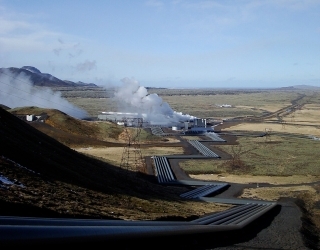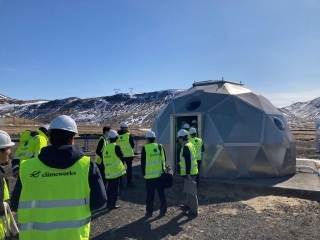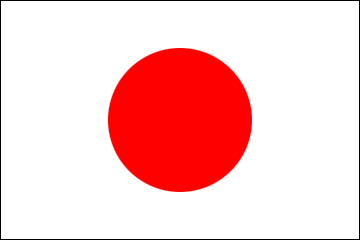From Ambassador (Hellisheiði Geothermal Power Plant)
2023/6/13


Both Japan and Iceland are rich in geothermal resources.
However, there has not been much attention paid to geothermal energy in Japan, and the utilization of the resource does not seem to have progressed very far. In Japan, there are a variety of “hot springs” all over the country, but currently geothermal power plants supply less than 1% of the total electricity demand. In addition, I have not heard much about attempts to use hot water for district heating.
On the other hand, there is growing worldwide attention to the use of geothermal resources. In order to reduce its dependency on coal and natural gas and achieve its goal to reduce greenhouse gas emissions to net zero, Japan also needs to utilize geothermal energy more proactively.
The Hellisheiði geothermal power plant, located 40 minutes' drive from Reykjavik, is one of the largest geothermal power plants in the world, with a generating capacity of 303 megawatts. It is, of course, the largest facility of its kind in Iceland.
For such a large power plant, an abundant source of hot water at relatively high temperatures must be available. Numerous boreholes have been drilled near the plant, and the production wells, drilled down to 2,000 meters below ground level, spew out vast quantities of steam and hot water, keeping the seven giant Japanese turbines running 24 hours a day, without a break.
Furthermore, the hot water used for power generation is not just thrown away, but is transported via pipelines to the surrounding areas of Reykjavik, where it is used as a source of hot water and heating. In fact, the supply of such hot water is a much bigger business than the generation of electricity.
There are many other geothermal power plants and businesses utilizing geothermal energy in Iceland, both large and small, which I find intriguing.
However, there has not been much attention paid to geothermal energy in Japan, and the utilization of the resource does not seem to have progressed very far. In Japan, there are a variety of “hot springs” all over the country, but currently geothermal power plants supply less than 1% of the total electricity demand. In addition, I have not heard much about attempts to use hot water for district heating.
On the other hand, there is growing worldwide attention to the use of geothermal resources. In order to reduce its dependency on coal and natural gas and achieve its goal to reduce greenhouse gas emissions to net zero, Japan also needs to utilize geothermal energy more proactively.
The Hellisheiði geothermal power plant, located 40 minutes' drive from Reykjavik, is one of the largest geothermal power plants in the world, with a generating capacity of 303 megawatts. It is, of course, the largest facility of its kind in Iceland.
For such a large power plant, an abundant source of hot water at relatively high temperatures must be available. Numerous boreholes have been drilled near the plant, and the production wells, drilled down to 2,000 meters below ground level, spew out vast quantities of steam and hot water, keeping the seven giant Japanese turbines running 24 hours a day, without a break.
Furthermore, the hot water used for power generation is not just thrown away, but is transported via pipelines to the surrounding areas of Reykjavik, where it is used as a source of hot water and heating. In fact, the supply of such hot water is a much bigger business than the generation of electricity.
There are many other geothermal power plants and businesses utilizing geothermal energy in Iceland, both large and small, which I find intriguing.
